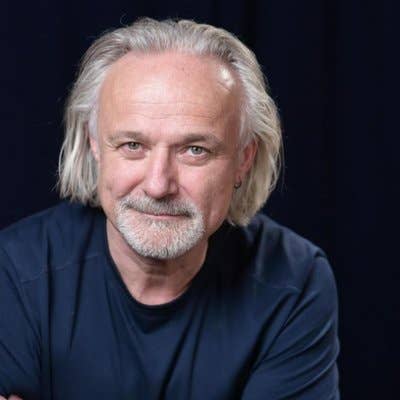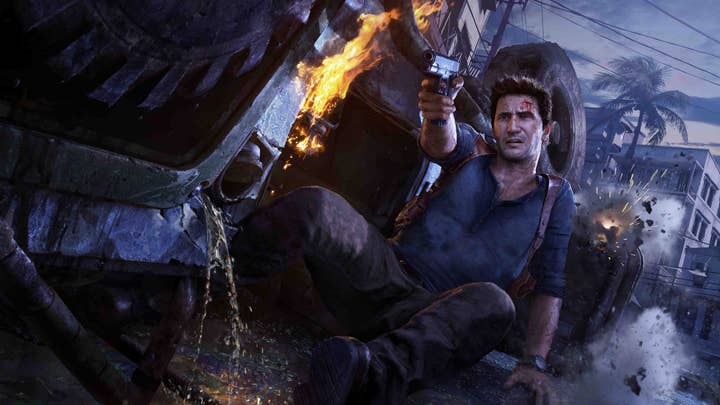Thoughts on game voice casting: Part One
OM's Mark Estdale shares best practices on recording dialogue and working with actors in video games
After a hectic few days at GDC18, on the flight from San Francisco I was musing about medieval torture methods. I wasn't thinking about a slippery competitor threatening me for trying to hire his best staff. What got me onto the twiddling of entrails and flailing alive was thinking about what it would take to get me to change an ingrained bad habit.
The trigger for this thought was a hotel meeting with a developer who, in my opinion, had ignored the obvious to their detriment. They weren't a green team. They had laid out their schedule for casting and voice recording with great detail. With gods knows how many millions invested, it was clear to me they had long passed the point where actors could make the best impact. Quite simply, they were casting too late.
"The objective is to get a unified 'hell yes!' about the performance as early as you can"
Lost in thought about the meeting, I was walking along Howard Street, just about to enter the Moscone Centre when I bumped into Phil Kovats who announced to the person I was with that I had transformed the way Naughty Dog recorded voices. I think I hugged him.
Back in 2011, Phil attended a talk I gave in England. One element of the talk was on liberating actors from the tyranny of the microphone on a stand, by using a Lavalier microphone attached to the head for voice recording, similar to how mics are used in theatre and broadcast. The attached mic frees the actor to move freely and live the character rather than being immobilised and effectively caged by the mic on the stand.
The effect of the cage can be heard. It constrains performance, even with the most experienced actor. Phil liked the idea and adopted it for Naughty Dog with the angler fish approach. They have recorded that way ever since.

My mics of choice are the DPA 4060 or the DPA D:Fine (above). If anyone advocates using a directional mic for this as opposed to an omnidirectional mic, they are either deaf or are recording in an inadequate room. (But that's for another day...)
What I realised from what Phil said was that things that seem obvious to me, from my experience, may not necessarily be obvious to others.
I've been immersed in production for 43 years, with game dialogue for 23, and I'm told I've been involved in somewhere around a thousand titles. The facts don't qualify me as an expert but I've been challenged and inspired by every game I've worked on, by every team and by every individual I've worked with.

Those who know me know that I've always questioned the status quo and that I've been in the privileged position of being free to experiment, looking for better ways of producing dialogue. However, with hindsight I now know that for the best part of my first 14 years in games, I was barking up the wrong tree.
I had originally stated that my mission was 'to bring the best practice in theatre, film and TV to performance in games'. A laudable sentiment but it was based on a perspective I now see as seriously flawed. I was tapping into my experience prior to games and the collective wisdom built on four thousand years of entertainment history, without recognising the basic fact that games are a new universe.
Their bedrock is sport not theatre, the engaged audience as opposed to the passive, of choice and consequence. This is game primer 101 stuff.
For performance in games this is hugely significant. What the actor brings to a play, movie or TV show is a refined and crafted interpretation of text and subtext. It is a combination of the writer's intent and the actor's life experience. In games, the actor gives life to a world into which the audience enters.
This I believe is as significant to actors and the way we produce dialogue, as was Fillipo Brunelleschi's introduction of linear perspective to art at the beginning of the Renaissance in 1415. We can cling to the past or we can work differently. This is about working differently.
These are my thoughts on what I've come to believe should be best practice for voice casting and recording for games. They are my opinions mixed with the wisdom of others. This first foray just looks at when to cast. The answer is as early as you can.
The Basics
Casting is recruiting. Get it right, you win. Get it wrong, you lose.
Recruitment is something every team knows. Over the years I've seen successful developers and publishers crash and burn, and others rise from nothing by taking on just one person. It's no different when casting actors for a game.
"For the characters to live, they need to connect to everything in the world they inhabit. The good actor and director will want to get under the skin of the why of everything"
A big impact for casting is when you do it. If the script is ready and you're ready to record, it is too late.
A visual view of character building is a process from idea, to sketch, to character art, to in-game model, to animated model, to voiced model. It's like going from corpse to zombie to life. Every stage, is fleshing out and inspirational, yet until voiced, the character is only brought to life by imagination.
If you've a team of 150 people siloed away for three years working with characters without voice, what you'll have is 150 unique imaginations giving life with 150 variations of each character. Those variations ossify with time and consequently will fracture the characters you're trying to build.
When casting late, consensus can be a nightmare to achieve, especially with a democratic team. If it's a few influential decision-makers, casting will still highlight conflicts but resolution will generally lead to a quick compromise. If it's one person making the call, it's easier for whoever's casting but you're pretty much guaranteed it won't be the character that dev team members have in their heads. It's messy and every compromise is an opportunity lost, not only for the character, but also for the overall design.
Conflicting imaginations signify disconnects, and it's not just the realm of individuals. Game developer cultures are like families. They can be delightful, loving and communicative but on the whole they are as dysfunctional and some are from hell: fractured, abusive, psychotic and destructive. Fractured teams develop siloed group-think and get locked in their own bubbles. The impact can be miserable.
When casting we need to find the congruence between the elements needed for life. Consequently the development culture is under the spotlight. Things that are bloody obvious, like the relationship between dialogue writing and animation, scream out when one is in isolation of the other.
In life: words, thoughts and our bodies act as one. They complement and reveal each other. The glory of great animation is the economy, truth and precision of expression. Where technical constraints limit the facial or body expressions in animation, it is imperative, if you don't want characters to look broken, that the expressiveness of dialogue is contained within those limitations. This of course goes for both writing and recording.

For the characters to live, they also need to connect beyond the words, and beyond the objectives and relationships in the words. They need to connect to everything in the world they inhabit, everything they own, everything they wear and value. The good actor and director will want to get under the skin of the why of everything. Because without clarity performance will lack connection and be devoid of life.
If casting late, the losses can be many, yet the impact of good casting choices can cover a multitude of sins and save the day as the actor and director can make decisions that make connections to give congruence. Like toning down over expressive writing to match the animation.
But audio folks know the pain of fix in the mix, as do film editors. A mess can be juggled to achieve mediocrity and even acclaim, yet the masterpiece that could have been was lost somewhere along the way.
Cast Early
Casting early opens up discussions, crosses siloes, prevents ossification, inspires writing, inspires animation, gives clarity and creates unity. The objective is to get a unified "hell yes!" about the performance as early as you can.
If you cast early enough, you'll also have time to evaluate the actor's impact before it gets critical. If the evaluation actually means changing the character, the process should have given you clarity enough, and time to change direction before it gets critical.
If good they will make life easier, they'll highlight strengths and weaknesses, they'll offer solutions and inspire ideas, they'll strengthen the team and the vision. If you hire them at the point of no return you're in the hands of the gods. Just like with all recruitment, timing makes a difference.
In my opinion, early for casting is when there are enough assets to evaluate in context what the actor can bring. A good time is when consensus on the character is shaping up, when there are pretty solid character descriptions that have approval, when you have concept art and you've a few lines of script.
Teams who cast early know the powerful unifying impact of the clarity it brings. Those who work on sequels with a well-loved cast by default experience the same benefits. They are able to achieve greater depth and nuance with relative ease.
Keep your eyes out for part two of this feature -- in which Estdale discusses casting briefs, character briefs and more -- in the coming days.
Mark Estdale founded audio specialist OM in 1996 with a recording studio in Pannal, Yorkshire. Since then the company has grown significantly with its headquarters in London and a studio in Los Angeles.